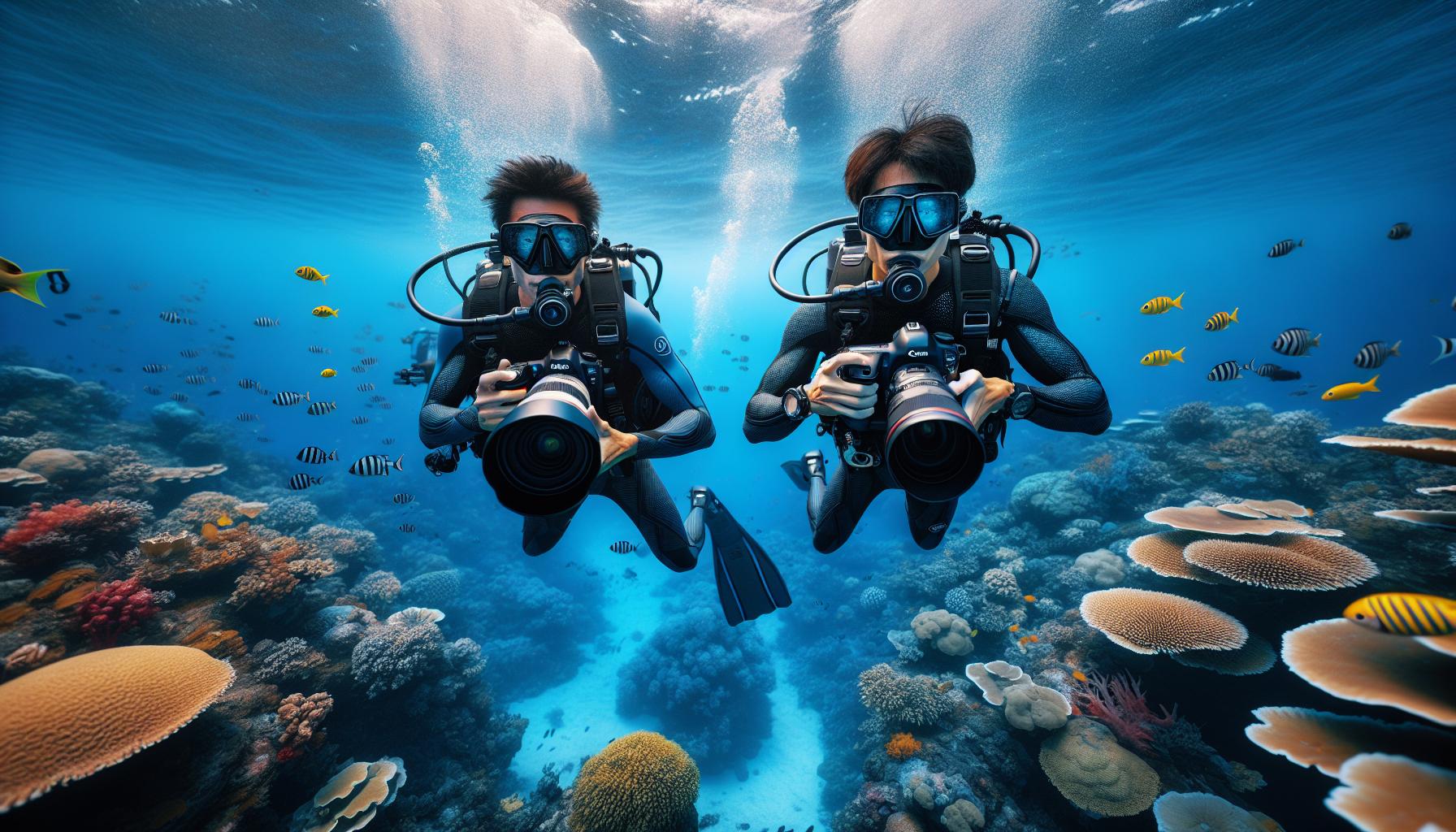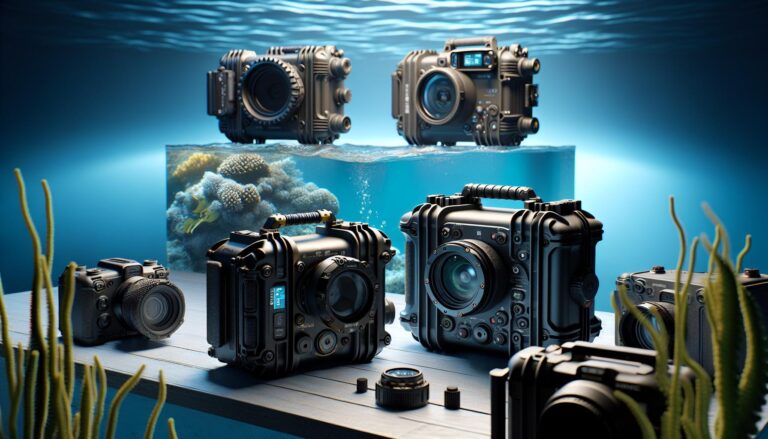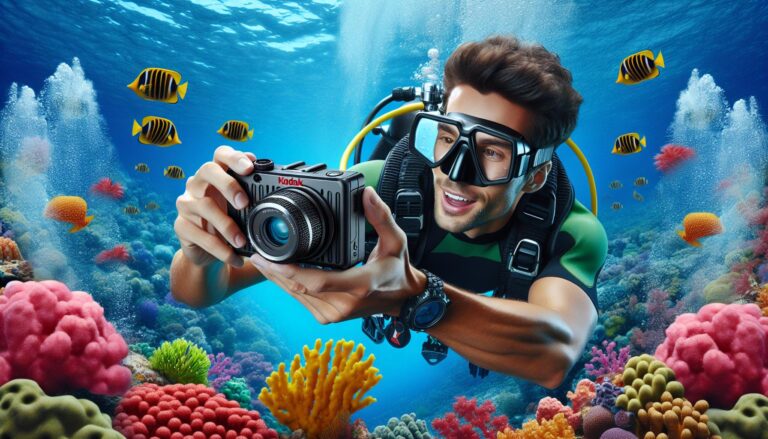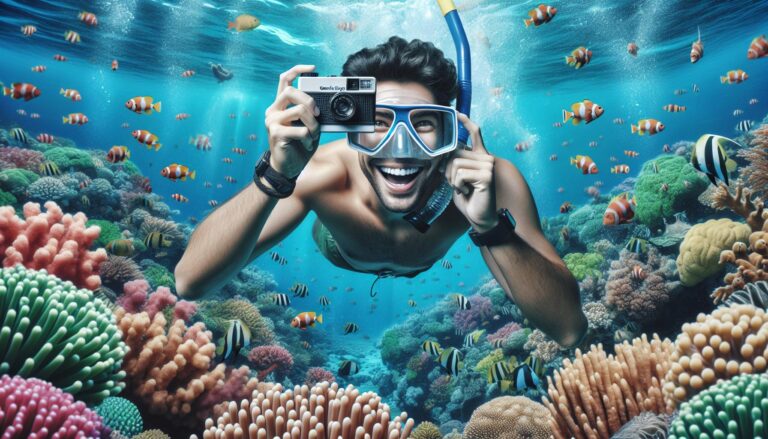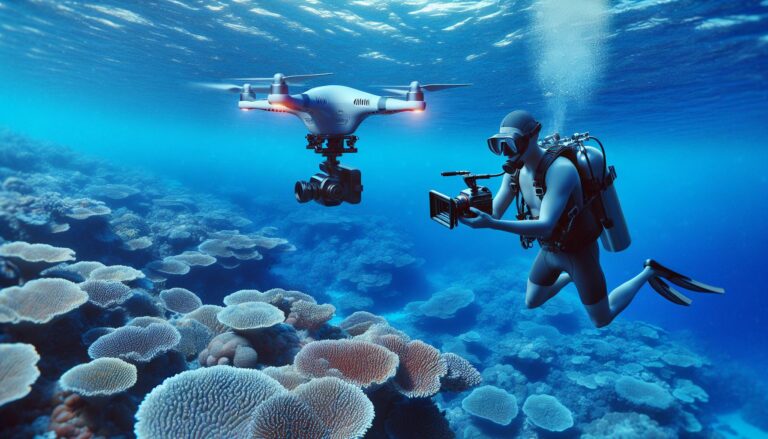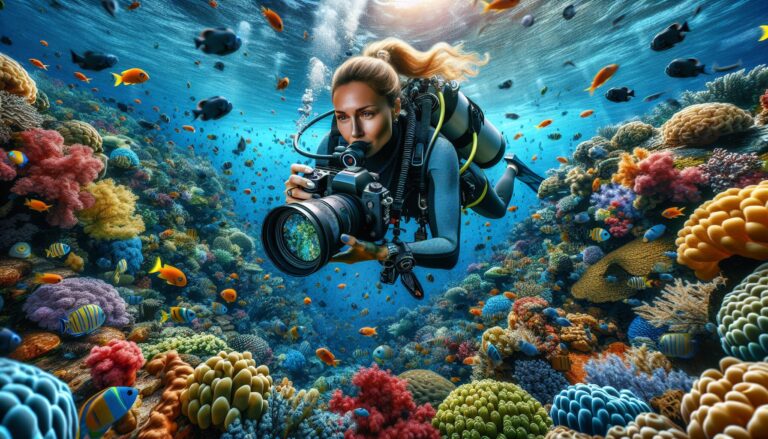Unleashing the Underwater World: How to Choose and Maintain Your Camera Underwater
Diving into the deep blue, you’re surrounded by a world filled with vibrant colors and fascinating creatures. But how do you capture this stunning spectacle to share with those confined to dry land? That’s where underwater cameras come into play.
Designed to withstand the pressures of the deep and deliver high-quality images, underwater cameras are a diver’s best friend. Whether you’re an amateur snorkeler or a seasoned scuba diver, there’s a camera built to meet your needs.
Join me as we delve into the world of underwater photography, exploring the best gear, techniques, and tips to help you capture the ocean’s beauty. It’s a plunge worth taking, one that’ll open your eyes to a whole new perspective of photography.
Understanding the Need for Underwater Cameras
With the ability to withstand the pressures of the deep and capture stunning visuals, underwater cameras serve unique and diverse purposes. Let’s dive deeper and understand the allure of underwater photography and different uses of underwater cameras.
The Allure of Underwater Photography
Underwater photography provides a window into a fascinating aquatic world that’s otherwise hidden from plain sight. By capturing the vibrant colors of the marine life and the curious structures of the undersea, it’s no surprise it magnetizes countless enthusiasts. Not only does it unravel the secrets of the deep ocean, but also produces captivating images often used by scientists, researchers, and artists alike.
- Scientific Research: Marine biologists use these cameras to study the aquatic ecosystem, tracking changes due to climate change and pollution.
- Underwater Exploration: Deep-sea explorers employ them to observe uncharted territories, illuminating hidden corners of the ocean.
- Wildlife Photography: These cameras assist in capturing high-definition images of elusive marine life in its natural environment.
- Sports & Recreation: Divers and swimmers use them for recreational activities such as scuba diving and snorkeling.
- Film & Television Productions: Underwater cameras contribute significantly to the creation of mesmerizing scenes in films and documentaries.
So, it’s safe to assert that underwater cameras play an essential role in a wide range of activities, from scientific instances to recreational pursuits, personifying how critical they are, not just for photography purposes but far beyond.
Key Features of a Quality Underwater Camera
Diving deeper into the intricacies, let’s focus on the critical features that set a quality underwater camera apart from its peers. Here, I’ll talk about waterproofing, low light performance, and the design of the camera.
Importance of Waterproofing
Waterproofing serves as the first line of defense for an underwater camera. This feature keeps the camera safe, not only from water but also from dust and humidity. Kodak’s PlaySport (Zx5) HD Waterproof pocket video camera, for example, is waterproof upto 10 feet.
Clarity and Low Light Performance
Creating high-impact photos requires excellent performance in low light conditions. Quality underwater cameras offer large sensors and wide-aperture lenses that capture more light. For instance, Nikon’s Coolpix AW130 16.0-Megapixel waterproof digital camera features a backside-illuminated CMOS sensor for superior low-light performance.
Handling and Design
An ergonomic design with user-friendly controls is crucial for handling the camera efficiently underwater. A compact shape, secure grip, and easily accessible buttons all contribute to a camera’s handling. Olympus’ Stylus Tough TG-6, with its grippable design and tactile controls, aptly illustrates this point.
Best Underwater Cameras for Diving
Diving deep into the ocean’s blues exposes us to unusual life forms and spectacular seabeds that demand to be captured in quality images. Here are some top-of-the-line underwater cameras ideal for both professional and beginner use.
Top Models for Professionals
Only the best gear suffices for professional underwater photographers. The Canon EOS 5DS R and Nikon D850 provide such excellence. These models offer high-resolution imaging, 50.6 and 45.7 megapixels respectively, capturing exceptional detail in dark underwater environments.
With its broad dynamic range and superb high ISO performance, the Canon EOS 5DS R allows pro photographers to capture finely detailed, dynamic shots even in dim light conditions. However, with a waterproof rating of 50 feet, the Nikon D850 matches low light performance with better water resistance. Moreover, its rapid, spot-on focusing guarantees crisp timing for those fleeting underwater scenes.
The Panasonic Lumix LX100 II, yet another professional favorite, comes with a solid water-resistant rating of 102 feet. Plus, its significant 21.7 megapixel resolution ensures high-quality imagery.
Affordable Options for Beginners
For those dipping their toes into underwater photography, affordability reigns supreme. Fortunately, the Olympus Tough TG-6 and GoPro HERO7 cater to beginner needs without compromising on quality.
The Olympus Tough TG-6, successor to the Stylus Tough TG-5, shines with a robust 12 Megapixel High-Speed Image Sensor, delivering clear images without breaking the bank. Beyond this, its 50 feet water resistance turns it into an ideal companion at shallow depths.
Similarly, the GoPro HERO7, complete with a waterproof feature upto 33 feet, proves a cost-effective companion for beginners. Its sturdy design, coupled with 12 Megapixel resolution, assures high-grade imagery, making it a favorite among rookie divers.
How to Maintain Your Underwater Camera
Maintaining an underwater camera goes a long way in its performance and longevity. Let’s explore some practical cleaning and storage methods.
Proper Cleaning Techniques
- Rinse Promptly: Immediately after your underwater adventure, rinse your camera housing. Use fresh water to get rid of salt residues and sediments.
- Use a Soft Cloth: Wipe the exterior with a soft, clean cloth. It’s best to rid the body of salt or sand grains before they harden on the casing.
- Check O-Rings: Be sure to get a dab of silicon grease to protect the O-rings from wear and tear. Remember, these rings shield your camera from water; they are too significant to be overlooked.
- Complete Dissembling: I recommend removing not only the body but also the lens, viewfinder, and battery for a thorough wash. Gentle soap water or special-purpose camera-cleaning solution comes handy in the process.
- Dry and Store: Prior to stowing the prized gadget, ensure it is completely dry. A damp closet can surprisingly lead to complications like fungus growth or rust.
- Utilize a Case: A sturdy, waterproof case is ideal for safeguarding against accidental bumps or spills. Look for one with foam or cushioning on the inside.
- Regulate Temperature: Just like other electronics, temperature control is essential for underwater cameras. Avoid exceedingly hot places, like car trunks, or extremely cold areas for extended periods.
- Usage of Desiccants: Combating moisture is a two-fold process. While external drying is important, using desiccants like silica gel packets in the storage compartment helps keep the interior dry as well.
Remember, even the top-notch underwater cameras, like the Canon EOS 5DS R, Nikon D850, Panasonic Lumix LX100 II, Olympus Tough TG-6, or GoPro HERO7, require regular and proper maintenance for optimum performance.
Notable Underwater Photographs Taken with These Cameras
Truly, underwater cameras possess a knack for capturing the unraveled beauty of the marine world. They’ve become the tools of the trade for notable photographers who’ve snapped some fantastic underwater shots.
Famous Underwater Photographers
Diving into the work of successful underwater photographers, we discover the magic of celebrated names such as Brian Skerry and Elena Kalis.
Skerry, a dedicated ocean wildlife journalist, primarily utilizes the Nikon D850 to capture his heart-stirring stills. His images provide not just aesthetic pleasure but also a profound understanding of our oceans.
On the other hand, Kalis, known for her surreal and theatrical underwater images, swears by the Canon EOS 5DS R underwater camera. Through her work, she explores the human connection with water, employing a unique blend of fantasy and realism. The sharp, clear images captured by the EOS 5DS R are perfect for epitomizing her artistic vision.
Captivating Underwater Shots
Underwater photographs can defy imagination, depicting moments that stick with you for a lifetime. For instance, Skerry’s iconic shot of a harp seal pup reveals the endearing life beneath the ice, an immemorial sight captured with a Nikon D850.
Another worth mentioning is a breathtaking shot captured by Kalis. Her renowned image of Alice chasing the White Rabbit under water showcases the Canon EOS 5DS R’s ability to capture even the highest speed movements with such precision.
Each of these captivating shots underscores the incredible diversity of underwater photography and the profound power of the cameras that make these images possible. With the right camera, the underwater world becomes a panorama of stunning surprises.
Buying Considerations for an Underwater Camera
Investing in an underwater camera requires careful consideration. Prioritizing your skills and budget can lead to a decision that satisfies your photography needs.
Evaluating Your Photography Skill Level
Mastering in photography isn’t a one-size-fits-all scenario. Your skill level determines the type of underwater camera best for you. For example, entry-level photographers may find point-and-shoot cameras, like the Olympus Tough TG-6, more user-friendly. It’s straightforward and requires minimal technical knowledge. Pros, fascinated by intricate details of marine wildlife, often prefer advanced models. Case in point, Brian Skerry’s use of the Nikon D850 is intentional, capitalizing on its refined features to deliver high-quality images.
Consider Your Budget
Remember, high-quality doesn’t always mean expensive. Consider your budget before venturing into buying an underwater camera. Sure, acquiring a higher-end camera, such as Canon EOS 5DS R—Elena Kalis’s favorite, might break the bank. But there are affordable models with exceptional performance, like the Panasonic Lumix LX100 II or GoPro HERO 7. Regardless of the price tag, your chosen camera should serve its primary role: capturing beautiful underwater photographs to the best of its ability.
Conclusion
I’ve walked you through the ins and outs of underwater cameras, from maintaining popular models to choosing the right one for your needs. We’ve seen how masters like Brian Skerry and Elena Kalis make magic with cameras like the Nikon D850 and Canon EOS 5DS R. But remember, it’s not all about the price tag. Cameras like the Panasonic Lumix LX100 II and GoPro HERO7 prove that you don’t have to break the bank to take stunning underwater shots. Whether you’re an entry-level photographer or a seasoned pro, there’s an underwater camera out there for you. It’s all about finding the one that’ll help you capture the underwater world in all its glory. So dive in, start exploring, and let your underwater adventure begin.

